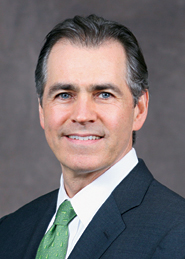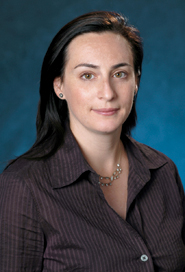In the wake of Bank of America’s 11th-hour acquisition of Merrill Lynch last Sept. 15, the combined firm managed to merge its two equities electronic trading groups without big drama. Merrill handily got the lead role in the combination.
“Merrill Lynch is a global franchise, while BofA was mostly focused on the Americas,” said Roger Anerella, head of global execution services in the equities global markets division. “We execute five-to-seven times the equity trading volume they did, so we also had a broader, deeper footprint.”
That equities powerhouse Merrill led the integration isn’t a surprise. In recent years, Merrill has rounded out and centralized its equities trading services. It covers the waterfront from crossing and smart-order routing to algorithms across all regions and markets. BofA, meanwhile, had begun getting out of the institutional equities space in early 2008. As a result, its sales, trading and quant research teams had scattered, with many executives leaving or being pushed out.
Standalone Business
Much of the institutional electronic equities group was dismantled long before the Merrill acquisition,” said William Harts, former head of electronic trading services and equity strategy for Banc of America Securities, who now consults for financial services companies and exchanges. “But Merrill’s team under Mike Stewart is strong. He understands the business and commands a lot of respect from clients.”
The combined global banking and markets division of BofA is now called Bank of America Merrill Lynch. Mike Stewart and Tom Patrick, both from Merrill, are co-heads of the global equity markets division. After the merger, the low-touch execution services division became a standalone business within this group. The other businesses are financing and services, the high-touch and portfolio cash desks, and derivatives.
For BofA-Merrill, a smooth merger of the low-touch groups was important. “The goal was to have a bigger and more powerful offering as a merged company,” Anerella told Traders Magazine. “That was what we committed to up front.” At the same time, he said, there was no need to keep duplicative infrastructure from both sides of the house. He declined to comment on the total number of the people in the combined group.
Historically, Merrill has had deep relationships with the 100 largest buyside clients, and a strong retail business, while BofA’s strength was with clients outside the top 100. BofA has also had several large hedge fund clients, although it sold its prime brokerage operation to BNP Paribas last year.
As BofA’s acquisition of Merrill approached Jan. 1, or “Legal Day One” of the new combined firm, BofA and Merrill clients became concerned about how the integration would affect them. Michael Lynch, head of Americas execution services, acknowledged this. “The main concern was timing,” he said. “The questions were: How fast can you complete the integration? And will it take years?”

BofA-Merrill gave clients a timeline in January and told them the integration would be completed in the first quarter. The firm kept that promise, Lynch said, while continuing to work on existing projects such as a rollout of options algos earlier this year. The firm, he added, didn’t push back any new products that were in the pipeline.
BofA-Merrill had to integrate the trading products and services of the two firms, and decide which products from which firm to keep or retire. “There was integration at all levels of the organization: sales service, algos, product development and the quant teams,” said Ruth Colagiuri, head of Americas electronic trading products. “Last year [at Merrill] we centralized high-touch, retail and electronic trading on a common platform that is now the combined Bank of America Merrill Lynch global execution platform.”
As part of the integration process, the broker-dealer had to migrate clients to the Merrill technology platform. Clients that already used both banks had to be shifted over to just the Merrill infrastructure. Those that were BofA-only customers had to be “onboarded” as Merrill clients and have their FIX lines certified. The process was the same as it would be for Merrill adding any new electronic clients, but the volume of clients coming aboard at the same time was much greater, according to Lee Morakis, head of Americas execution services sales. In the end, he said, the surge of new customers drove the onboarding teams to operate more efficiently and shorten the timeframe for integration.
Diversity of Flow
The addition of BofA’s flow to Merrill’s has augmented the flow passing through the combined firm as well as the diversity of that flow, according to Lynch. The new liquidity has also boosted the likelihood of Merrill’s single-stock dark pool, called MLXN, finding matches for orders. Merrill doesn’t release monthly volume figures for MLXN, but Lynch said it’s in the top five, based on the numbers for other pools published by TABB Group and Rosenblatt Securities.
The algorithms of both firms also had to be compared and integrated into one offering. The firms’ quant teams worked together in the first quarter, examining data that tracked the behavior of the algos. “It was a pretty unique opportunity to have two houses strong in electronic trading and to compare the performance of each data set and see how both firms’ algos performed,” Morakis said. The firm decided to keep Merrill’s algos as its core offerings, but pulled BofA’s popular Instinct and Ambush algos into that suite. BofA’s other algos were retired.
The two BofA algos that were kept, developed by the quant team led by mathematician Robert Almgren, who left BofA last year to co-found Quantitative Brokers, had heavy usage among clients. Merrill wound up tweaking some of the data inputs for Ambush, which is an adaptive version of an arrival-price algo, to adjust its reactions in particular market conditions.
The algos were a focus for some BofA-only clients, who had worried that key electronic trading strategies they’d relied on might disappear during the integration or become less useful. “They wanted to make sure they got the same user experience when they turned to the Ambush algo,” Morakis said. “They also wanted to ensure that the algos would be faithfully integrated into Merrill’s trading tools.”
Client Involvement
Several buyside firms Traders Magazine spoke with said the integration, from their perspective, went well. Clients who had used both firms found that the BofA algos they’d turned to most frequently had been maintained and were easily accessible from their front-end systems. The firms had no complaints about the integration or their access to Merrill’s products or trading teams.
The BofA-Merrill group also merged the two firms’ sales coverage in the U.S. This involved significant client feedback. “We had more client involvement in the integration on the sales side than [we did] on trading, and more on the high-touch side than in other areas,” Lynch said. He added that there are no separate teams for formerly unique BofA clients.

Sang Lee, co-founder of research firm Aite Group, credits Merrill with running a smooth transition. “If they opted for most of Merrill’s infrastructure, then a shorter integration time frame is not a big surprise,” he said. “But three months for any integration work is still impressive.” However, he added, it can also take time and effort to get customers that were only BofA customers used to the products and services of a new broker-dealer.
Adam Sussman, director of research at financial services consulting firm TABB Group, noted that client retention is always a difficult issue when firms combine. “On the electronic trading side, making sure that clients continue to be well serviced through the technology integration and change in personnel and coverage is key,” he said. “The technology also has to remain reliable and stable. Clients, after all, can pay for research in many ways.”
The BofA-Merrill electronic trading group is now also in the process of migrating its front-end client offering to BofA’s InstaQuote execution management system, and away from Merrill’s X-Trade. The latter never gained sway and could not compete with platforms like Goldman Sachs’ REDIPlus or Townsend’s RealTick (owned by Barclays Bank). “The underlying technology and infrastructure for InstaQuote was better and more scalable,” Merrill’s Anerella said.
InstaQuote, which BofA acquired in 2004 from Direct Access Financial Corp., was a proven third-party trading platform. Several years ago, according to BofA, the platform had grown to more than 6,000 users, mostly from small and midsize hedge funds. “It’s a good solid prime brokerage product with a top-notch tech group,” consultant Harts said. Several dozen people from the original Texas-based technology group that BofA gained as part of the InstaQuote acquisition five years ago still develop, run and support the trading platform.
BofA-Merrill is continuing to offer clients a version of the Portware EMS, which is geared to portfolios, as part of a deal put in place two years ago. The broker-dealer’s algos and trading analytics are also integrated into all major buyside order management systems, proprietary OMSs and broker-neutral EMSs.
(c) 2009 Traders Magazine and SourceMedia, Inc. All Rights Reserved.
http://www.tradersmagazine.com http://www.sourcemedia.com/




